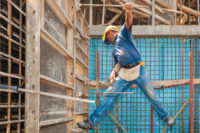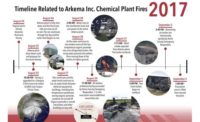Full calibration vs. bump gas test
Before we explore this subject further, it should be noted that there is a difference between a full calibration and a bump gas test. While both essentially expose the sensors to a calibration gas, a bump test is simply “bumping” the sensors up against a quick exposure to the calibration gas to determine if the sensors are responding. The instrument should alarm, indicating to the end-user that the sensors successfully detected the gas they were exposed to and are functioning properly. A full calibration is more substantial and will take more time than a simple bump calibration. This requires going into the menu on an air monitor instrument and following the necessary steps to fully calibrate each sensor. A bump test can take as little as a few minutes, where a full calibration can take considerable time to run.
Why calibrate?
So, why is calibration necessary? As a gas detector ages, the sensors can begin to degrade or drift. This means the reading on the instrument begins to vary somewhat from the results typically obtained from a new sensor. Unfortunately, this drift does not occur at predictable intervals.
Exposing the sensors to high levels of contaminants or frequent use are often variables that contribute to the degradation of the sensors. The expected life of most sensors is typically two to three years.
The whole objective to purchasing a gas detector is to assure that the environment is safe for the employees. In order to rely on the meter, the results need to be verified. This is accomplished by comparing the readings to a known concentration of gas. Several manufacturers of direct-read air monitors sell calibration gas. Calibration gas, or cal gas, comes in single gas or in many different mixtures and concentrations, each intended for use with specific air monitors. The concentration of the gas in the cylinder is exact and certified to NIST (National Institute of Standards and Technology) standards. When calibrating or bump testing, the cal gas used must be fresh, not exceeding the expiration date. In addition to bump testing and calibration, each manufacturer has a recommended frequency for full factory calibration.
Bump test basics
A few items are needed to properly perform a bump test. Calibration gas is primary. This gas must be the combination and concentration recommended by the instrument’s manufacturer. A regulator is required to get the calibration gas out of the cylinder at a predetermined flow rate and pressure. Tubing is necessary to direct the gas from the regulator into the instrument. Most instruments come with an attachment called a calibration clip or cover. The tubing is attached to this clip or cover to flow the calibration gas over the sensors.
OSHA says…
Although OSHA does not have specific standards regarding bump testing, if an incident were to occur and an employee was overcome by a contaminated atmosphere, OSHA could cite the employer based on the General Duty Clause. According to OSHA 29 U.S.C. 654 section 5(a) (1) of the General Duty Clause of the Occupational Safety and Health Act, employers must provide their employees with a workplace free from recognized hazards likely to cause death or serious physical harm. Employers may be cited for violating the General Duty Clause if there is an OSHA recognized hazard, and they do not take reasonable steps to prevent or abate the hazard.
In regards to the calibration of air monitoring equipment, OSHA issues bulletins, which are intended to help employers maintain a safe workplace. OSHA often relies on the recommendations or standards of recognized experts in their field. One such expert is the International Safety Equipment Association (ISEA). ISEA, founded in 1933, is a trade association for manufacturers of protective equipment, including environmental monitoring instruments. ISEA issued a position statement on instrument calibration that states, “A bump test or full calibration of direct-reading portable gas monitors should be made before each day’s use in accordance with manufacturer’s instructions, using an appropriate test gas.” If the instrument fails a bump test, it must be adjusted through a full calibration before use.
One place where calibration of a direct-read air monitor is required is in confined space entry. OSHA standard 1910.146(c)(5)(ii)(C) states: “Before an employee enters the space, the internal atmosphere shall be tested with a calibrated direct-reading instrument for oxygen content, flammable gases and vapors, and for potential toxic air contaminants, in that order. Any employee who enters the space or that employee’s authorized representative shall be provided an opportunity to observe the pre-entry testing required by this paragraph.”
Be proactive
Performing regular bump testing and following the manufacturer’s recommendation for full calibration reflect a proactive safety culture. Once an avoidable incident occurs, the damage is done and cannot be undone. It’s too late to say, “We should have calibrated that unit to verify its reliability.” Simply said, bump testing and full calibration are ways to help insure that employees will safely return home to their families at the end of the work day.
For additional assistance with the calibration of your air monitors, contact the manufacturer of the instrument you have or contact your comprehensive safety supplier for assistance.






